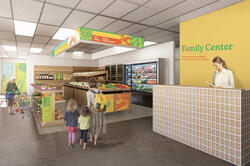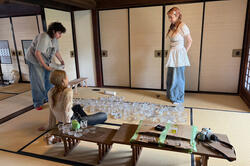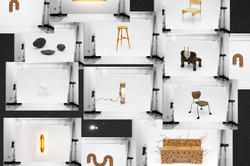Student interventions transform the Front Street Family Center in Woonsocket, RI into a celebration of food, wellness, and community.
RISD Students Design Site-Specific Furniture Inspired by Late Architect Louis Kahn
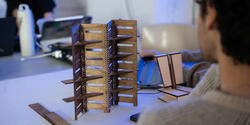
Furniture Design and Architecture students in the collaborative fall studio Site Specific Furnishings are taking inspiration from work by renowned architect Louis Kahn to design site-specific furniture. The class is offered in partnership with Form Portfolios, a local design business that works with the estates of influential late designers, including Kahn.
“We’re devoting the semester to developing and producing a single design project,” says faculty member Peter Dean, who is teaching the course. "I believe the future belongs to the collaborative, and I'm excited to see how the students from these two disciplines use their distinct expertise, skills, techniques, and knowledge."
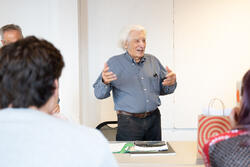
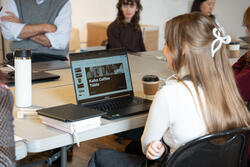
The group is refining their design skills, drafting, modeling, building a better understanding of wood as a material, and learning what inspires them in their work. Outside of the classroom, they’ve taken field trips to the Yale Art Gallery and Yale Center for British Art, which were designed by Kahn, to get a firsthand look at the architect’s style.
In September, Kahn’s daughter, Sue Ann Kahn, visited the class and shared a personal view of her father’s life, work, and creative inspiration. She noted that he was blown away by ancient buildings in Greece and southern Italy and how they interacted with light. The conversation prompted Dean to ask the class “What is it that turns your head when you’re passing a gallery window, what makes you stop and go inside, and what makes you approach a work of art?”
Students later presented their designs in progress to architect David Rothstein, who studied under and worked for Kahn. Jenny Stageberg MArch 26 read her favorite Kahn quote to the class before presenting her plan for a coffee table: “The sun never knew how great it was until it hit the side of a building.” Inspired by the trip to Yale, Stageberg noted the importance of light, shifting volumes, and material connection in Kahn’s work. Her 18x36-inch coffee table features demountable castle joints and cane webbing on top as a nod to Kahn’s love of geometry, which Rothstein commended.
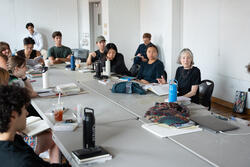
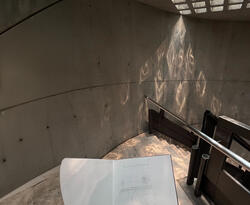
Liz Shepherd MArch 26 was drawn to Kahn’s use of concrete and rectangular geometry and referenced them in her design for a living room chair. The piece is boxy with striated pieces of wood that resemble concrete. Rothstein asked if a piece in the back was necessary to its functionality and noted that it is always “good to know what is and is not essential.” Other students presented their plans for a side table, cabinets, and other seating pieces that respond to the spaces for which they were designed.
By the end of the course, they will each have created a finished piece that reflects their research and view on site specificity relating to Kahn’s work. Many of their pieces have a knock-down aspect so they can easily transport the furniture throughout their life.
“The idea here is to focus on the full spectrum of design. So, they’re not only designing furniture but understanding where it’s going to be placed,” Dean explains. “Louis Kahn was an architect involved in total design. He’d not only design the building, but the lighting, the detail, the doorknobs, the doors, the furniture—everything.”
Kaylee Pugliese / Top image: model of a room divider by Architecture student Wells Lamhaouar
October 20, 2025
